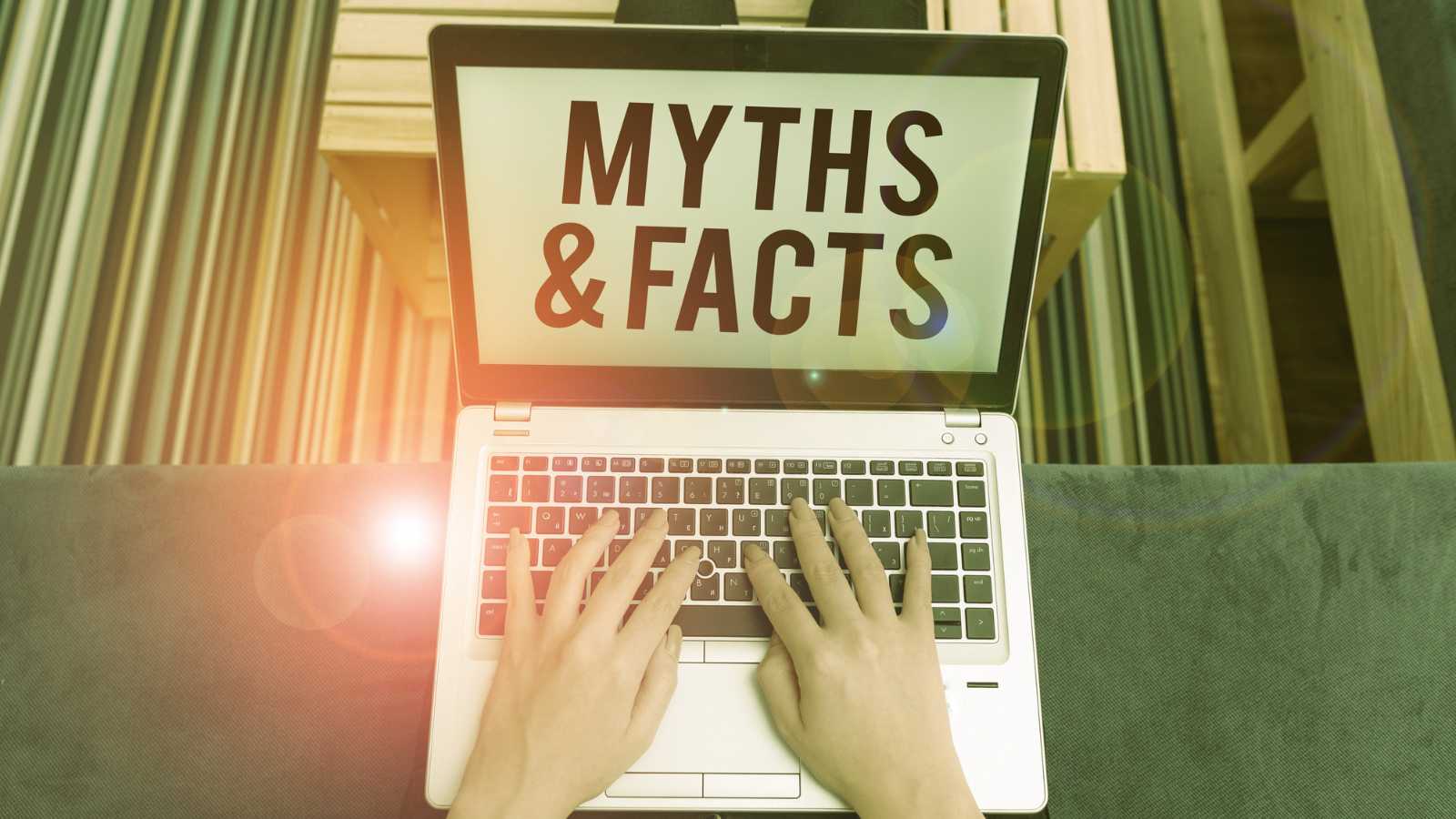9 myths people still believe even though science disapproved them

Image Credit: artursz/123RF
Stop me if you’ve heard this one before: you catch a cold because you forgot your jacket, or maybe you’re hyper because you ate too much candy. We all carry around a mental backpack of “facts” our parents, teachers, or that one friend who “read it somewhere” taught us. Even though 88% of U.S. adults agree that scientific research deserves federal support, according to the National Science Foundation research, a surprising number of us still cling to biological fairy tales that researchers debunked decades ago.
I admit, I spent years avoiding cracking my knuckles because my grandmother swore it would twist my fingers into pretzels. It turns out, we often fall for the “Illusory Truth Effect”—if we hear something enough times, we start to believe it’s true regardless of the evidence. Today, we’re going to clear out the cobwebs. I’ve dug into the latest reports, from National Science Board data to entomologist interviews, to bring you the hard truth.
Here are nine myths that refuse to die, and why you should finally let them go.
Humans use only 10 percent of their brain

This is arguably the granddaddy of all neuro-myths, popularized by movies like Limitless and Lucy. You see this stat everywhere, and a survey found that most of the general public still believes it. The allure is obvious: we love the idea that we have a hidden 90% of potential just waiting to be unlocked, so we can learn Mandarin in an hour or move objects with our minds.
The reality is far less magical but much more efficient. fMRI and PET scans show that you use virtually every part of your brain, even when you are sleeping or performing simple tasks. Evolution wouldn’t allow us to carry around a massive, energy-guzzling organ (which consumes 20% of the body’s energy) if 90% of it were just dead weight. As neuroscientist Dr. Barry Gordon bluntly puts it, the myth is “laughably false”.
Sugar causes hyperactivity in children
We’ve all been there: you’re at a birthday party, the cake comes out, and suddenly the kids are bouncing off the walls. You naturally blame the sugar, right? Surprisingly, science says you’re wrong. This myth stems from the 1970s Feingold Diet and a single study that the medical community has since largely disproved.
Extensive double-blind trials show no physiological link between sugar intake and hyperactivity. So why do we still see it happen? It’s a classic case of the placebo effect in parents. In one study, researchers gave kids a sugar-free drink but told the parents it was full of sugar; the parents subsequently rated their children as significantly more hyperactive than the control group.
The chaos at the party comes from the excitement, the games, and the disruption of routine, not the frosting. Sorry, but you can’t blame the cupcake for the tantrum anymore.
Goldfish have a 3-second memory
I used to feel better about keeping a fish in a small bowl because I thought, “Hey, he forgets where he is every three seconds.” We see this stat everywhere; Microsoft even published a report claiming the human attention span has dropped to 8 seconds—supposedly one second less than a goldfish. But this is a total fabrication that insults fish everywhere.
Dr. Culum Brown, a fish cognition expert at Macquarie University, notes that goldfish actually have memories that span weeks, months, and even years. They can learn to navigate mazes, remember where food appears at specific times of day, and even recognize their owners. If a goldfish can remember a maze solution for months, we cannot forget to fact-check this stat next time we hear it.
Shaving makes hair grow back thicker and darker

This is the number one grooming myth that dictates how teenagers (and many adults) handle body hair. A Gillette survey found that this remains one of the most common beliefs among its customers, despite clinical trials debunking it as far back as 1928. Whatever your shaving habits—and apparently 40% of men now “manscape”—the razor has zero communication with the hair follicle deep beneath your skin.
Here is what actually happens: hair naturally tapers to a fine point, like a pencil. When you shave, you slice the shaft at its thickest part, leaving a blunt tip. When that blunt tip pokes through the skin, it feels coarse and stubbly, and it looks darker because it hasn’t been bleached by the sun yet. It’s a convincing optical and tactile illusion, but it is biologically impossible for a surface cut to alter the growth rate or thickness controlled by your genetics.
Cracking your knuckles causes arthritis
I can still hear my mother warning me that my hands would get gnarled if I didn’t stop popping my fingers. She wasn’t alone in her concern; studies show 54% of people crack their knuckles, and many still fear the repercussions. But you can relax (and crack) safely. The sound isn’t bones rubbing together; it’s gas bubbles (nitrogen and carbon dioxide) popping in the synovial fluid that lubricates your joints.
Need proof? Dr. Donald Unger, a dedicated empiricist, cracked the knuckles of his left hand daily for 50 years, leaving his right hand alone as a control. After 36,500 cracks, he checked the X-rays: no arthritis in either hand. He won an Ig Nobel Prize for his dedication, and he effectively proved that while the sound might annoy your coworkers, it won’t ruin your hands.
Different parts of your tongue taste different things
You probably remember coloring in a “tongue map” in elementary school—sweet on the tip, bitter in the back, sour on the sides. It looks neat, but it is scientifically bogus. This entire concept originated from a mistranslation of a 1901 German paper by David Hänig. A Harvard psychologist, Edwin Boring, reinterpreted Hänig’s data in 1942, mistaking slight differences in sensitivity for absolute boundaries.
In reality, every part of your tongue containing taste buds can detect all five flavors, including umami. While some areas might be infinitesimally more sensitive to bitter or sweet, the difference is negligible in real-world eating. So, if you’re trying to avoid the bitter taste of kale by shoving it to the side of your mouth, I have bad news: you’re still going to taste it.
Bulls become aggressive when they see red

The image of the matador waving a red cape (muleta) is iconic, but the bull isn’t charging because of the color choice. Here is the kicker: bulls are dichromats, meaning they are effectively colorblind to red-green. To a bull, that bright red cape just looks like a yellowish-grey rag.
What actually makes the bull angry? It’s the movement. MythBusters tested this by putting a stationary red flag next to a moving blue flag, and the bulls attacked the moving blue one every time. The red cape is purely for the human audience (to mask the sight of blood) and for the event’s theater.
The bull is charging because a strange person is waving a cloth in its face, which, honestly, would annoy me too.
Cold weather directly gives you a cold
“Put a coat on or you’ll catch pneumonia!” This is the most persistent health advice in American history. A survey found that 42% of Americans believe getting sick in winter is inevitable, often blaming the temperature. But let’s be precise: viruses cause colds, not low temperatures. You can sit in a freezer all day, but if the rhinovirus isn’t present, you won’t catch a cold.
However, there is a fascinating nuance here (FYI: science is rarely black-and-white). A recent study from Mass Eye and Ear (2022) found that cold air can weaken the immune response in your nose by reducing the number of “extracellular vesicles” that fight bacteria. So, while the cold weather doesn’t create the sickness, it might crack the door open for the virus.
But you still need the virus to walk through that door, which usually happens because we’re all crowded indoors, breathing the same air.
The average person swallows eight spiders a year in their sleep
I saved the creepiest for last. We’ve all heard this statistic, and it terrifies everyone with a pulse. But I have great news: it is almost certainly false. Rod Crawford, the curator of arachnids at the Burke Museum, explains that a sleeping human is terrifying to a spider.
We vibrate, we have a heartbeat, and we exhale hot air, which spiders instinctively avoid.
The backstory of this myth is even better than the biology. For years, people believed this fact originated from a 1993 article by a columnist named “Lisa Birgit Holst,” who was trying to prove how gullible people are.
But internet sleuths eventually discovered that “Lisa Birgit Holst” is an anagram for “This is a Big Troll”. The “fact” that debunked the fact was also a fake! It’s a myth wrapped in a troll wrapped in a spider web. IMO, that’s the internet in a nutshell.
Key Takeaway

We live in an age of information overload, where a “fact” can travel halfway around the world before the truth has even put on its shoes. Trust the scientific method, not just the headlines. Whether it’s respecting a goldfish’s intelligence or realizing your knuckles are safe, challenging these myths makes us smarter and, frankly, a little less anxious.
So next time someone tells you to put on a hat to stop a virus, you can politely tell them it’s a little more complicated than that.







